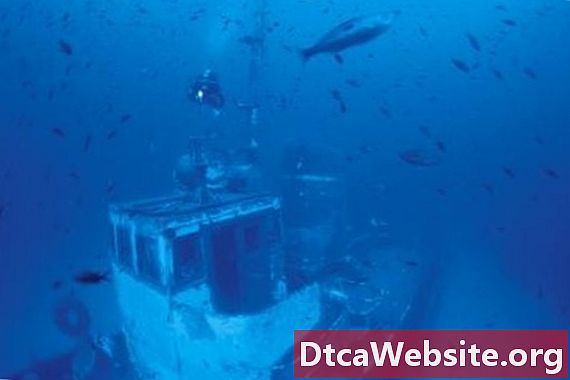
Contenu
- Poor Design
- Instability
- Navigational Errors
- Weather
- Warfare
- Effects of Age
- Improper Operation
- Fire and Explosion
- Equipment Failure
- Intentional

For as long as ships have been traveling upon the waters of the earth, they have been sinking. Despite mans best attempts to build unsinkable ships, numerous factors combine to foil their best laid plans. There are ten primary reasons, or contributing factors, to the demise of a seafaring vessel. However, a wreck is rarely the result of just one cause; rather, it is often a combination of factors that spells the end of the line for a ship.
Poor Design
Ship design is fundamental to the ultimate performance and safety of a vessel. When not identified, design flaws can lead to catastrophic failures, resulting in the loss of the ship, crew and passengers. For example, poorly designed loading doors on ferries can fail, allowing water to pour into the ship.
Instability
When a ships center of gravity is raised above the water line, or to the left or right of the ships center-line, the ship can become unstable. Instability can be aggravated by rough seas and heavy winds as well as the result of poor design, improper loading, shifting cargo or buildup of ice.
Navigational Errors
Poor navigation is a common cause of shipwrecks, resulting in collisions with land, icebergs or other vessels. In the case of shipwrecks, navigational errors are often compounded by poor weather.
Weather
Ships are extremely susceptible to the forces of nature. Low visibility, rough seas, high winds and icing can play havoc with vessels, ing many to the sea floor.
Warfare
Throughout the ages, a large portion of all shipwrecks are the result of warfare. Many of these sunken vessels were targets of aerial attacks, mines, torpedoes, surface combat and intentional ramming.
Effects of Age
Whether a ship is constructed of timber or modern steel, aging is a contributing factor to many shipwrecks. Aging timber hulls can leak severely, exceeding the ability of bilge pumps to compensate. Steel hulls rust and are susceptible to metal fatigue, leading to breaches of the hull.
Improper Operation
The manner in which a vessel is operated can also lead to a shipwreck. Exceeding the operational limits of a craft, or operating it in an unsafe configuration, can prove deadly. This contributed to the loss of the Mary Rose in 1545. The English warship sank in the English Channel in heavy seas after taking on water through open gun ports on her lower deck.
Fire and Explosion
One of the most dangerous emergencies for a sailor is an on-board fire. Ship fires can rapidly spread and lead to catastrophic damage, including explosions. Fires are particularly dangerous on warships, which contain magazines full of explosives.
Equipment Failure
Equipment failure can easily contribute to a shipwreck. For instance, a ship that loses its propulsion system can be pushed onto reefs, sandbars or rocky shores. Failures can involve electrical systems, hydraulic systems or individual components, such as engines, navigational equipment or bilge pumps.
Intentional
Many shipwrecks are the result of intentional sinking, called scuttling. This may be done for benevolent reasons, such as creating artificial reefs or to dispose of a captured enemy ship.


